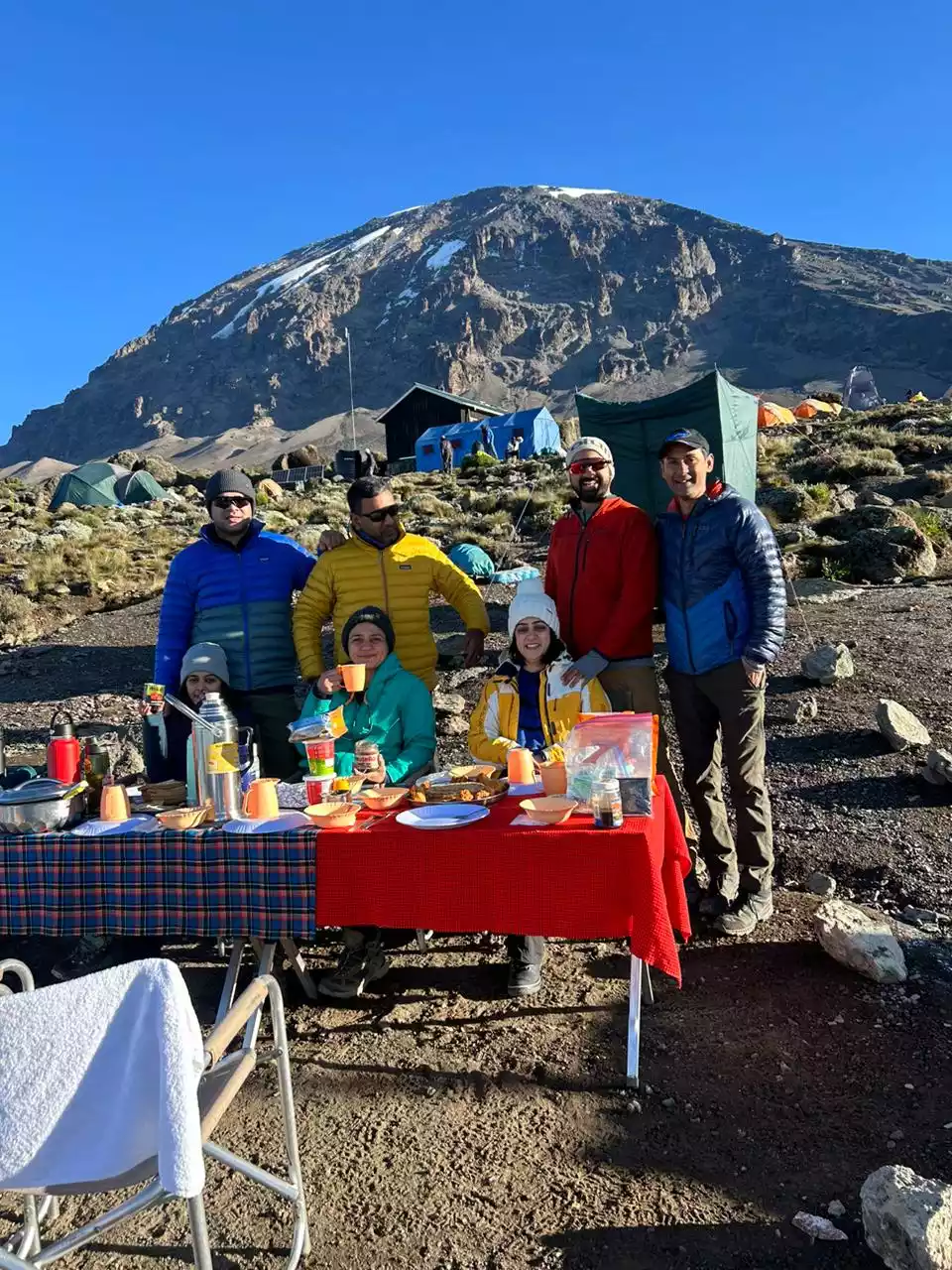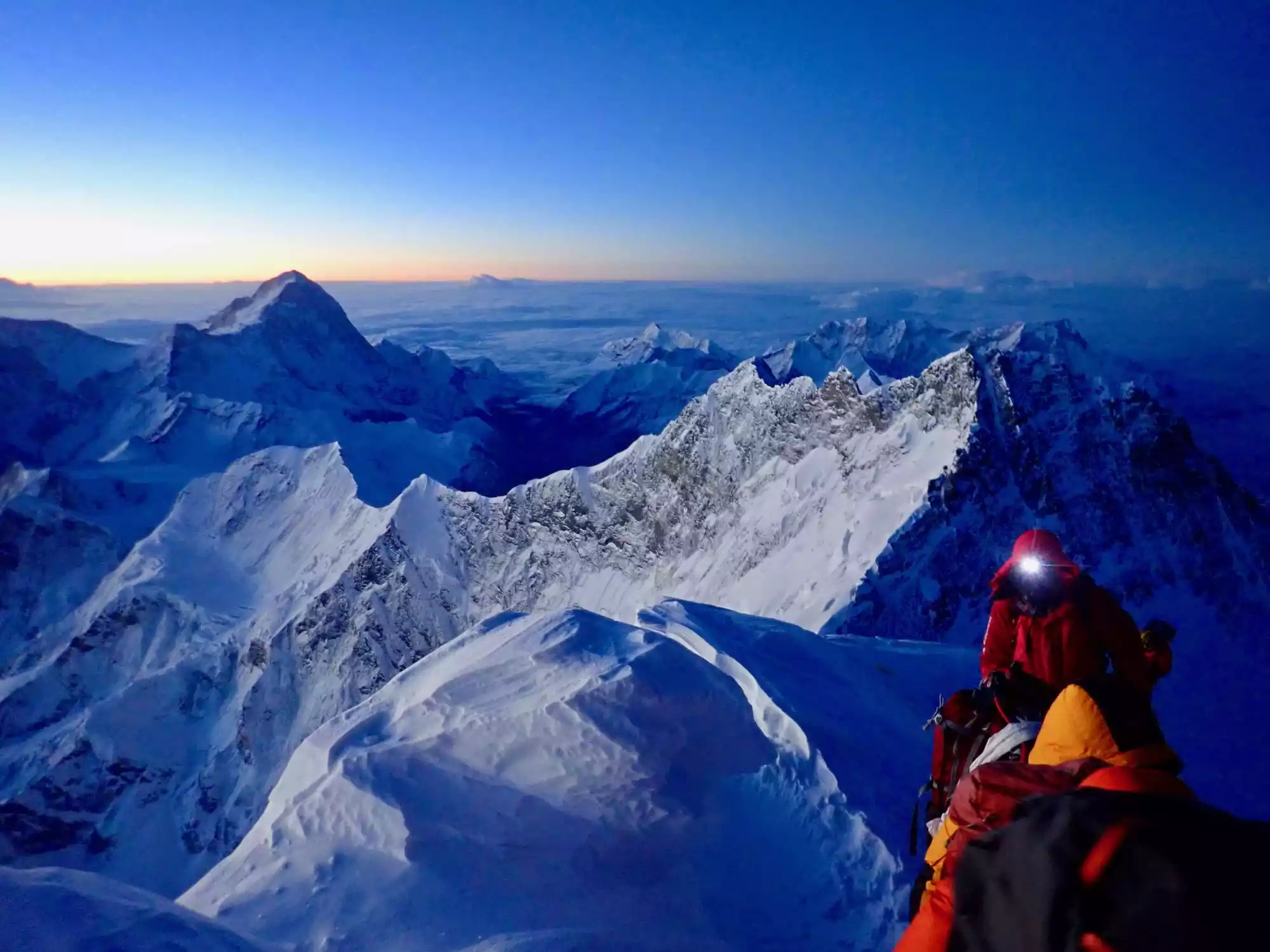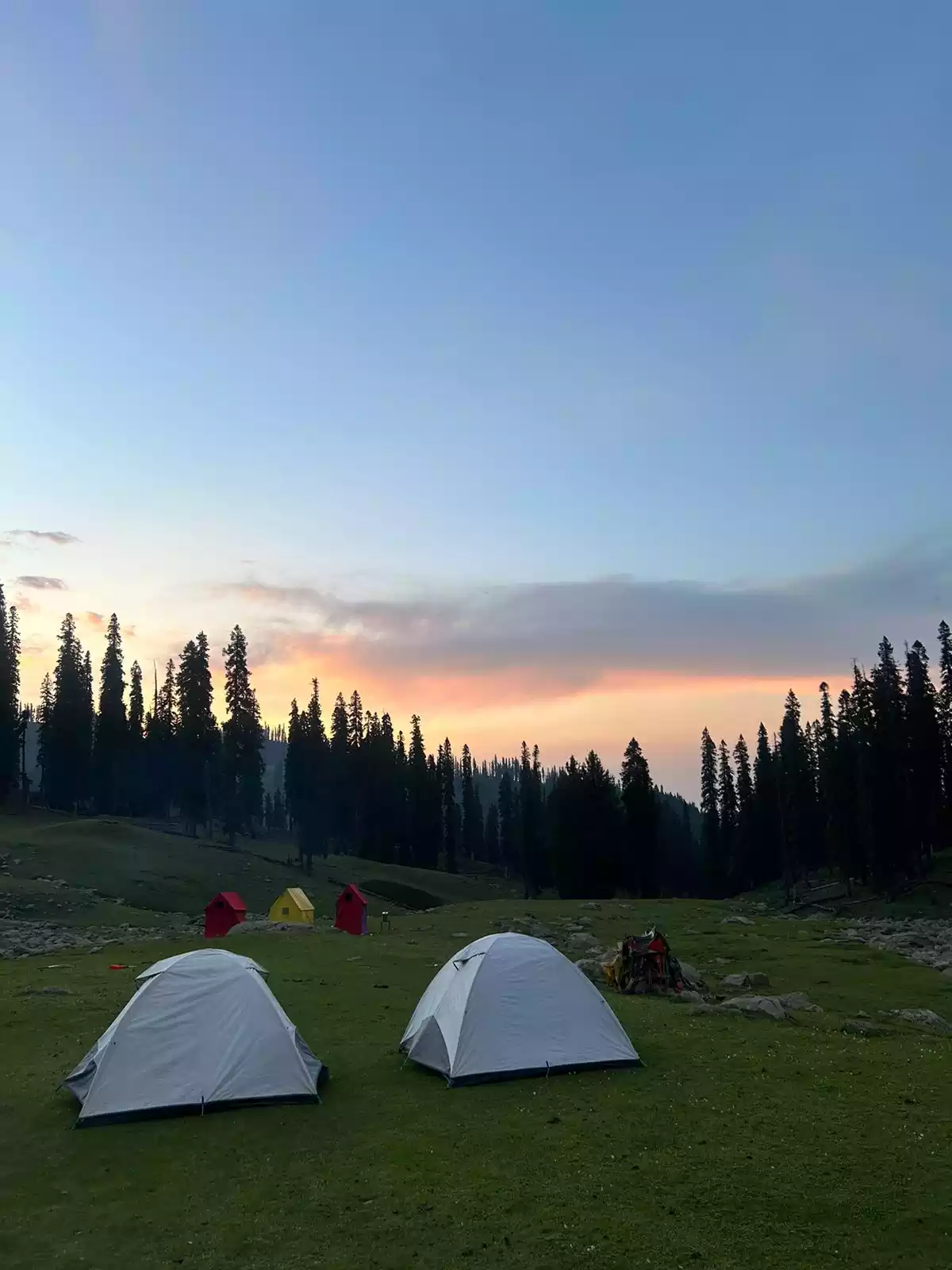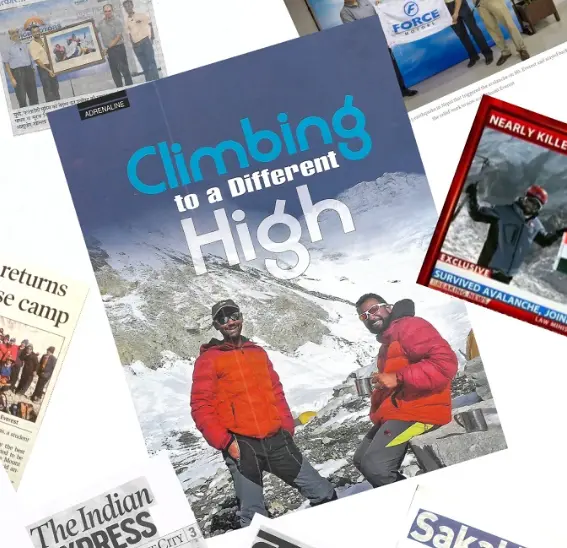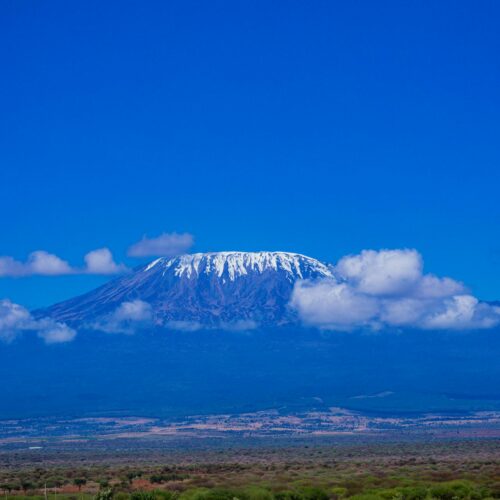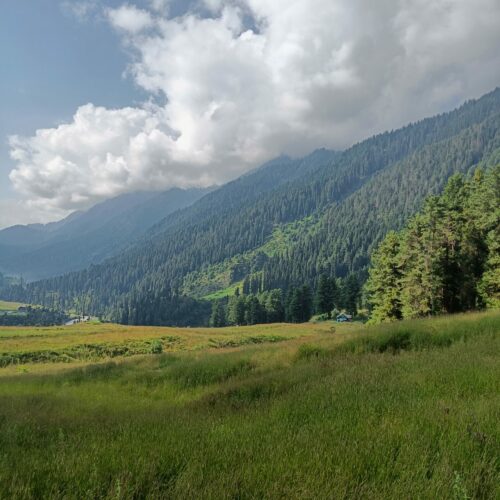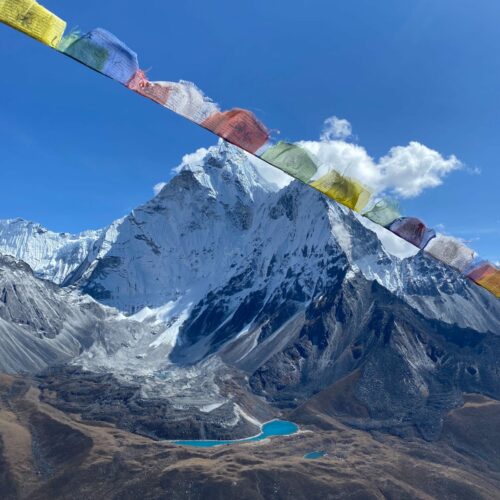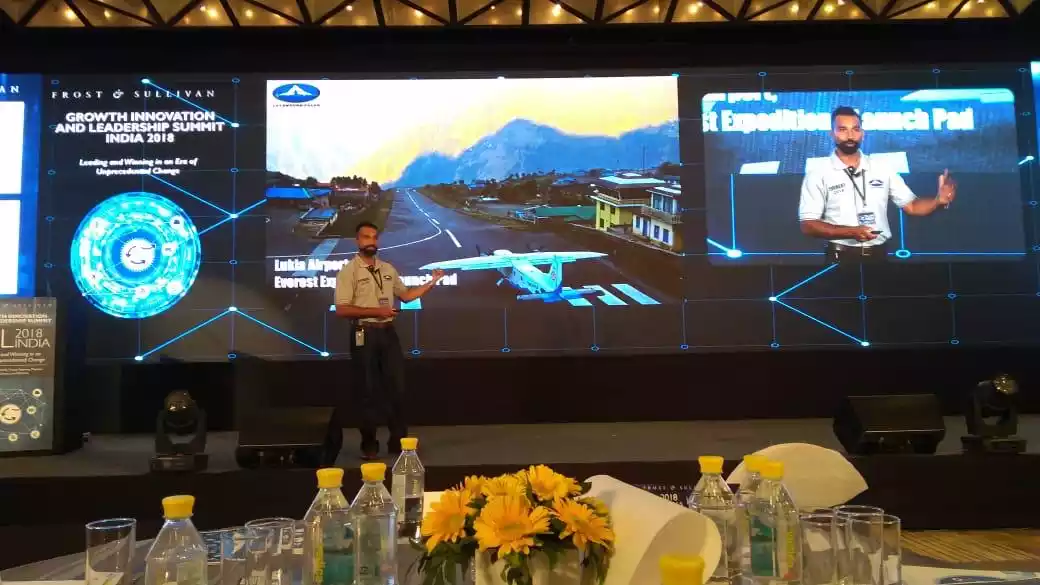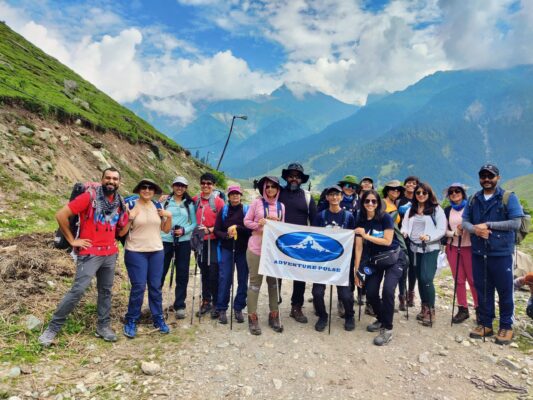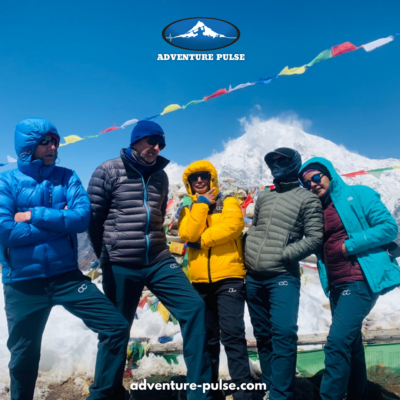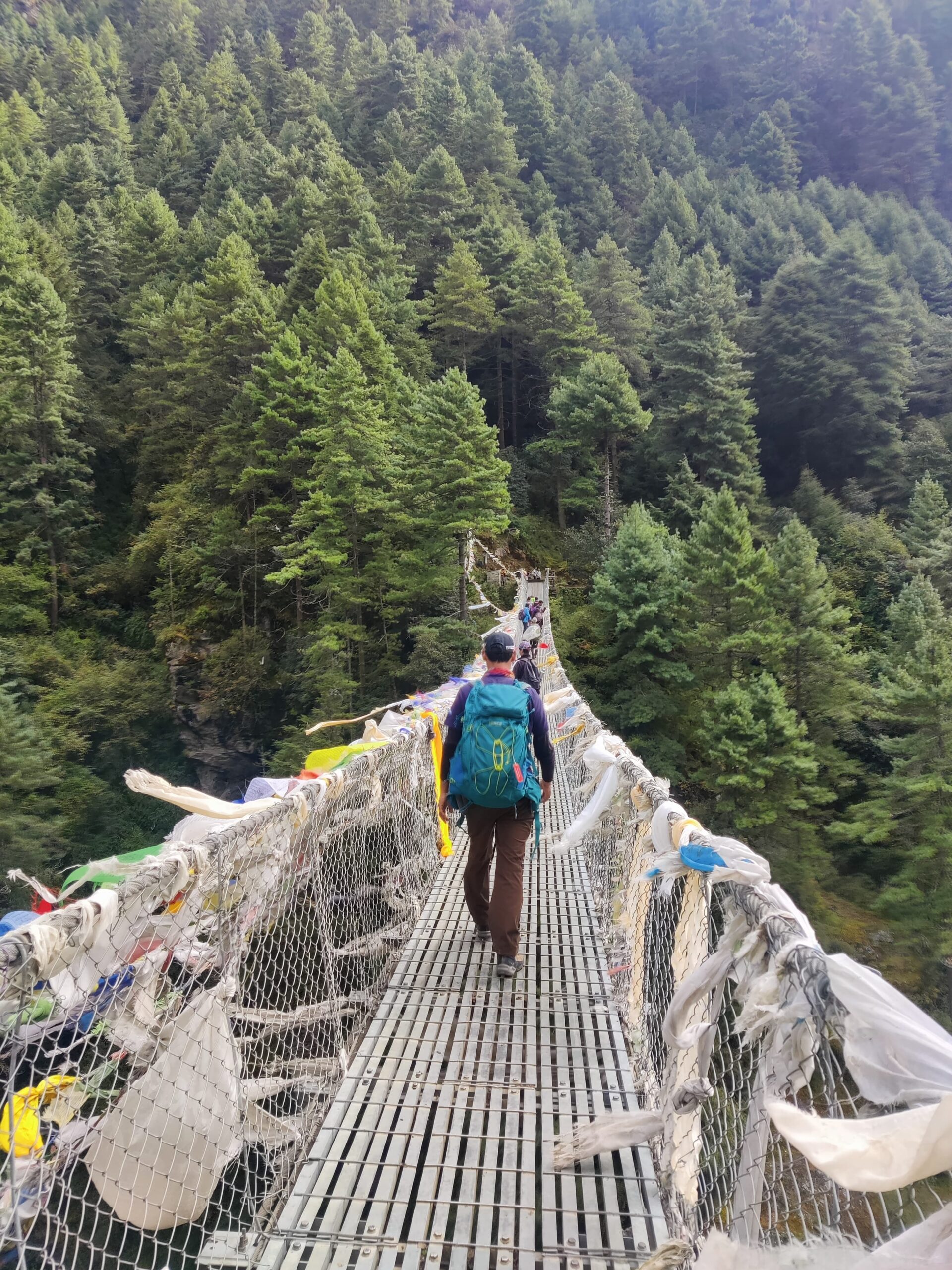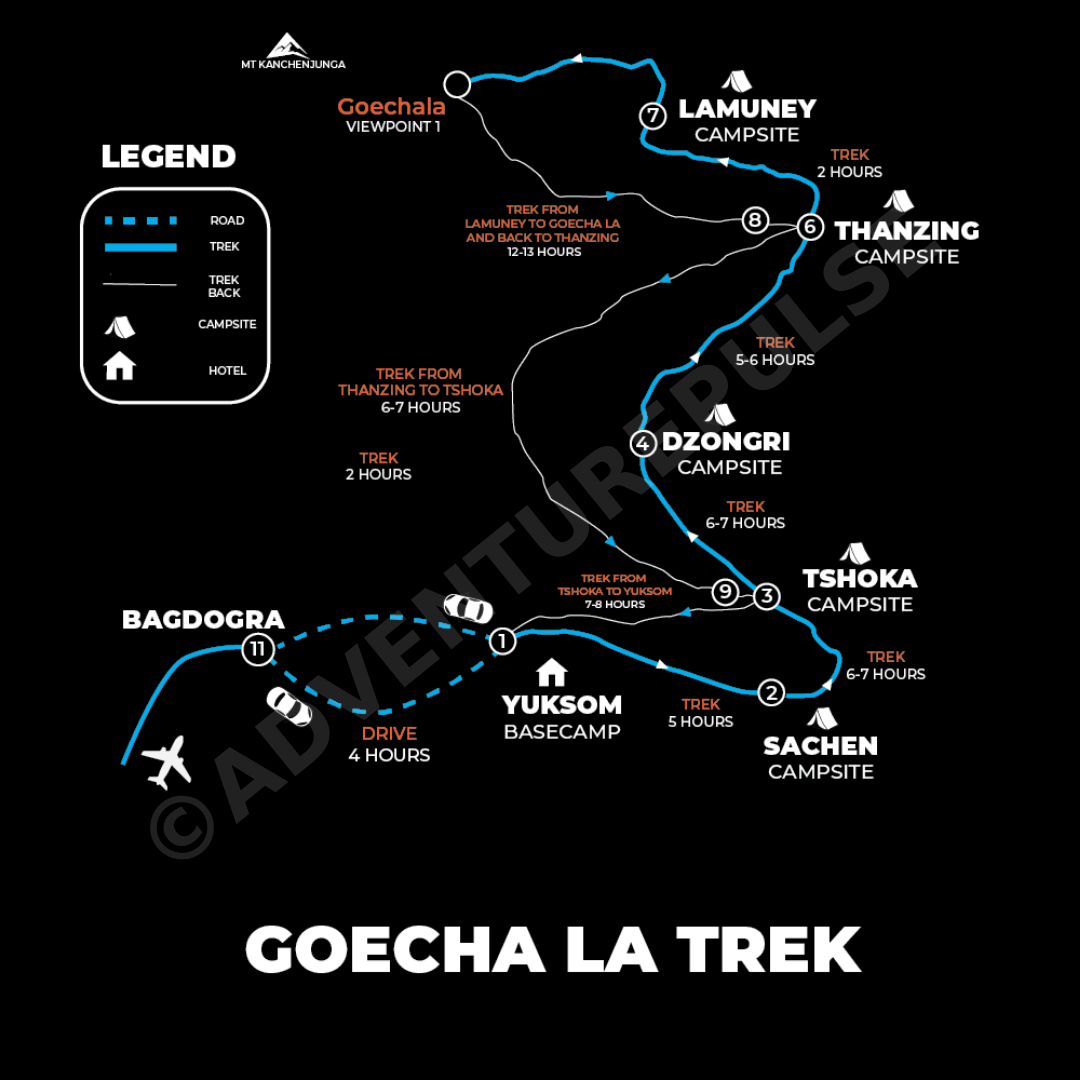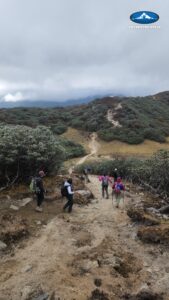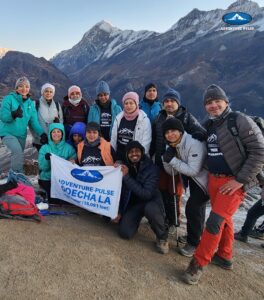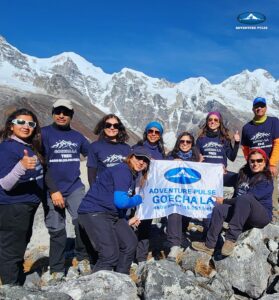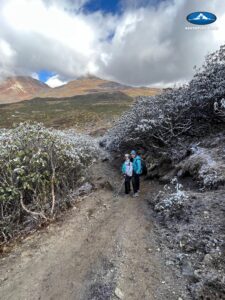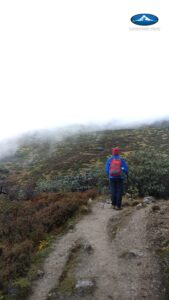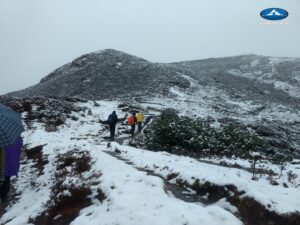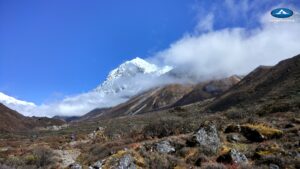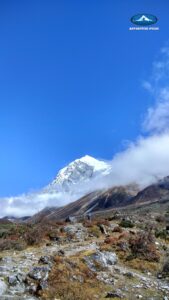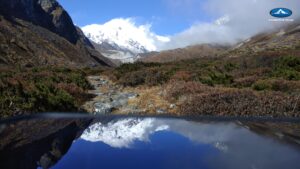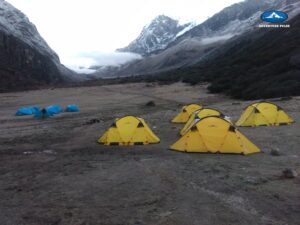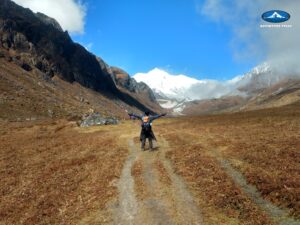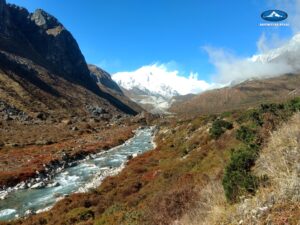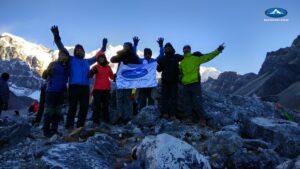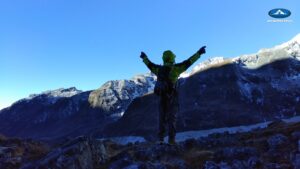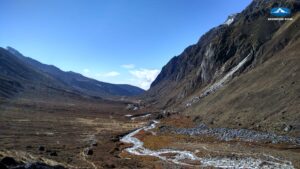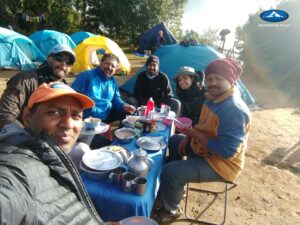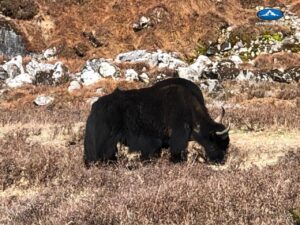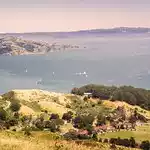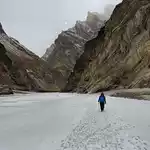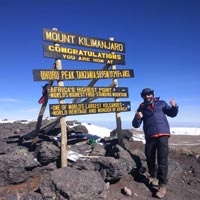Brief Itinerary
- Day 1 - Drive from Bagdogra to the basecamp – Yuksom (6–7 hour drive)
- Day 2 - Yuksom to Sachen (Altitude: 5700 feet to 7200 feet, 5-6 hours)
- Day 3 - Sachen to Tshoka (Altitude: 7200 feet to 9650 feet, 6-7 hours)
- Day 4 - Tshokha to Dzongri via Phedang (Altitude: 9650 feet to 12980 feet, 6-7 hours)
- Day 5 - Acclimatization and Rest Day at Dzongri (buffer day) (12980 feet to 13,681 ft, 45 minutes-1 hour climb to Dzongri Top)
- Day 6 - Dzongri to Thansing via Kokchurang (Altitude: 12980 feet to 12894 feet, 5-6 hours)
- Day 7 - Thansing to Lamuney (Altitude: 12894 feet to 13693 feet, 2 hrs)
- Day 8 - Lamuney to Goecha La, Back to Thansing (Altitude: 13693 feet to 16400 feet and back, approx. 12-13 hours)
- Day 9 - Thansing to Tshoka (Altitude: 12894 feet to 9650 feet, 7 hours)
- Day 10 - Tshokha to Yuksom (Altitude: 9650 feet to 5700 feet, 7-8 hours)
- Day 11 - Yuksom to Bagdogra. Fly out.
Inclusions & Exclusions
Trip Cost Includes:
- Accommodation: 2 nights stay in a Guest House at Yuksom with breakfast and dinner + 8 nights in Camping on twin sharing basis with all meals.
-
Food: Dinner and Breakfast in Yuksom as well as all meals during the trek.
-
Transportation: Group Airport pickup and drop
-
Trekking permits and forest camping charges.
-
Trekking Gears: Tents, Sleeping bags, Mattress etc.
-
Services of an expert Adventure-Pulse trek leader. (*For a group of 8 and above)
-
Services of an expert trek team (guides, cooks, helpers)
-
Porters/Mules to carry your personal luggage.
-
Basic first aid kit and medical assistance.
Trip Cost DOES NOT Include:
- International or domestic flights.
- Food during the transit. (To and from Yuksom)
- Personal clothing and equipment.
- Any items/services not specifically mentioned under inclusions.
- Travel insurance.
-
Any medical costs incurred by you, or costs associated with a medical incident, evacuation charges and damage of any nature.
-
Optional trips or excursions. Personal expenses of any kind.
-
Tips for local staff and guides.
-
Costs arising out of unforeseen circumstances such as bad weather, landslides, road conditions and any other circumstances beyond our control.
Things to carry
Download as PDFExtreme temperature variations, high altitude, snow glare & proximity to sun are certain factors which necessitate the need to for proper mountaineering and trekking equipment. In order to enjoy your experience in the mountains, we have recommended that you carry the following with you.
Apparel
- Thermal Inners - At least 1 pair of Top and Leggings
- 6-8 t-shirts or long-sleeve shirt (cotton / dryfit)
- 2-3 pairs of trekking pants (no denim)
- 1 Sweater/Sweatshirt
- 1 Fleece Jacket
- 1 Down Jacket
- 1 Waterproof Layer like raincoat or wind-cheater
- 1 pair of hiking boots/ shoes (No sneakers while trekking)
- 1 pair of comfortable sandals/floaters for the camp site
- 8 to 9 pairs of cotton socks
- 2 pairs of thick/woollen socks (for night)
- Gloves - liner and outer
- Sun hat
- Woollen cap
- Buff
Accessories
- Duffel bag / Rucksack (60L+)
- Daypack / Backpack (20-30L capacity)
- Sleeping bag liner (if needed/optional)
- 2x 1L Bottles (to carry drinking water)
- Lunchbox
- Torch + Batteries / Headlamp
- Knee/Ankle/Wrist Guards
- Trekking Poles
- Sunblock
- Sunglasses
- Moisturiser
- Hand Sanitiser
- Personal Medical Kit
- Personal Toiletries Kit
- Snacks
Fitness
Download as PDF- There are three main aspects of training to focus on – strength training, cardiovascular training, and trekking + trekking alternatives.
- Strength training involves training different muscle groups, so that they can become stronger. There are different exercises for each muscle group, and working them all out 2x-3x a week should be enough to help you get comfortable trekking.
- Legs / lower body - exercises like squats, glute bridges, step ups and leg presses with help you develop stronger muscles in the lower body.
Core - Exercises like planks, bicycle crunches and leg raises can help with core stability; Pilates is also a core-intensive type of workout that will help.
Upper body - Bodyweight exercises like push-ups, pull-ups and dips will help develop these muscles. You can also use resistance bands or light weights to develop them further.
- It’s vital to do plenty of cardio training before your trek, so that you can get the most out of your experience
- Running - This is the most recommended form of cardio activity, as it activates a lot of the same muscles as trekking. Being able to run 10km in 60 minutes will allow you to get the most out of your trek.
Cycling / Swimming - If you have knee issues, or don’t enjoy running, you can also opt for cycling and swimming. Being able to cycling 30-50km or swim for 30-40 minutes, thrice a week, should be good to help you with treks like EBC.
HIIT training / Crossfit - Another option to level up your cardio training is to opt for high intensity aerobic exercises like HIIT or Crossfit, 2-3 times a week
The aim is to get your heart rate up, so you do not get winded on long days of trekking
- Hiking
Try to get outdoors and go for a hike on the weekends! Uphill trails of 4-8 kilometres are will help you get used to trekking. Make it a point to carry a loaded backpack, and walk in your trekking shoes.
- Hiking Alternatives
Climbing stairs, and using the treadmill or stairmaster on an incline, will help prepare you for treks. Make it a point to carry a loaded backpack so that you can get used to the extra weight; and use your trekking boots, so that you can break them in and walk comfortably.
- If you’re confused with all this information, no need to worry! The most important thing with training is consistency, and staying injury-free. Your training week should ideally have
Strength training - 3 sessions
Cardio training - 3 sessions
Hiking - 1 long session, best on the weekends
Rest and stretching - at least 1 day
FAQs
Goecha La
What are the staying arrangements for this trek?
While in Yuksom, Adventure Pulse will put you up in a comfortable hotel/Guesthouse on double sharing plan with breakfast and dinner included. Once we start the trek to Goecha La, the accommodation is in a camp set up. We would have good quality tents on double sharing basis with a separate dinning tent for meals and a separate toilet tent. Sleeping bags and mats are also provided by Adventure Pulse.
What kind of physical shape do I need to be in to trek here?
You need to be in good physical shape to trek to this mountain pass. It’s a challenging trek and does demand good physical fitness and some bit of prior trekking experience. Please refer to our physical fitness document for more details on this topic.
What are the entry and exit points for this trek?
One needs to fly to Bagdogra Airport for the Goecha La trek. There are regular flights from Delhi, Mumbai and Kolkata. On your arrival in Bagdogra, you will be picked up by an Adventure Pulse representative and transferred to Yuksom, the start point of the trek. After the trek, we will arrange for transportation from Yuksom to Bagdogra airport.
Do I need any special equipment / climbing gear for this trek?
Any kind of climbing equipment or gears are not required for this trek. For list of other things and warm clothing to carry, please refer to our link - List of things to carry for the Goecha La trek.
What is the communication system available along the way?
Regular phone and data services work in Yuksom. Yuksom has good phone and data connectivity with 3G and 4G services also available on most networks. While on the trek, most days there is no network except at Sachen. One is disconnected on most days during the course of the trek.
What about high altitude acclimatization?
We at Adventure Pulse consider acclimatization as one of the most important aspects of trekking / climbing a mountain and spend enough time to do that. We move up the mountain slowly giving enough time to our bodies to acclimatize and one full day is spent at Dzongri to acclimatize and hike around before continuing the trek to Goecha La.
What are the food arrangements?
The hotel in Yuksom serves good breakfast (Bread Omelet, Paratha, Puri Bhajii etc) which is included in the meal plan. Dinner is also included in the meal plan which will be a mix of Indian food (Roti-Sabji, Tarkari, Daal Rice etc). While on the trek, all meals are included and the meals are usually a good mix of Indian and continental food. Our cooks are very experienced and will be happy to entertain any particular requests you may have for your meals. All the meals are served in the common dinning tent/in trekkers huts.
Will I be able to take a shower or bath during the course of the trek?
Regular shower facilities will be available in the hotel in Yuksom. But while we are higher up on the trek, shower facility is not available for the trekking period.
What are the emergency medical precautions available during the trek?
The Adventure Pulse staff and guides carry a fully equipped medical kit with necessary medicines and an Oxygen meter. As a standard practice, we check oxygen levels of all our clients twice a day and take necessary precautions if any irregularity is found in the oxygen reading. In case the problem persists, the client is sent down with a qualified guide. In case of an Injury where the trekker is not in a position to walk down, a Pony is organized to Yuksom where a vehicle and a doctor visit can be organized.
What happens in case of bad weather during the trek?
Adventure Pulse usually plans all it treks during the most favorable season on the mountain, but having said that, weather is always an unpredictable factor. We usually look at weather reports before leaving for the Goecha La Pass. In case the weather is unfavorable, we could delay it to the next day depending upon the Itinerary. A buffer day/s is always built in the itinerary as contingency if we get hit by unfavorable weather conditions. In the worse situation, we may have to turn back midway, but safety is always a priority which cannot be compromised on.
Featured Blog Posts
 Goecha La – A Glimpse of Sikkim’s Beauty in 20 Pictures! – 2026 - Goecha La - Sikkim's Paradise The Goecha La trek is a journey through some of the most breathtaking landscapes in…
Goecha La – A Glimpse of Sikkim’s Beauty in 20 Pictures! – 2026 - Goecha La - Sikkim's Paradise The Goecha La trek is a journey through some of the most breathtaking landscapes in…  My Goechala Experience – An Unforgettable Trek in Northeast India! - The first day of my Goechala trek, from Yuksom to Sachen, unfolded with an unexpected fluency that caught me by…
My Goechala Experience – An Unforgettable Trek in Northeast India! - The first day of my Goechala trek, from Yuksom to Sachen, unfolded with an unexpected fluency that caught me by… 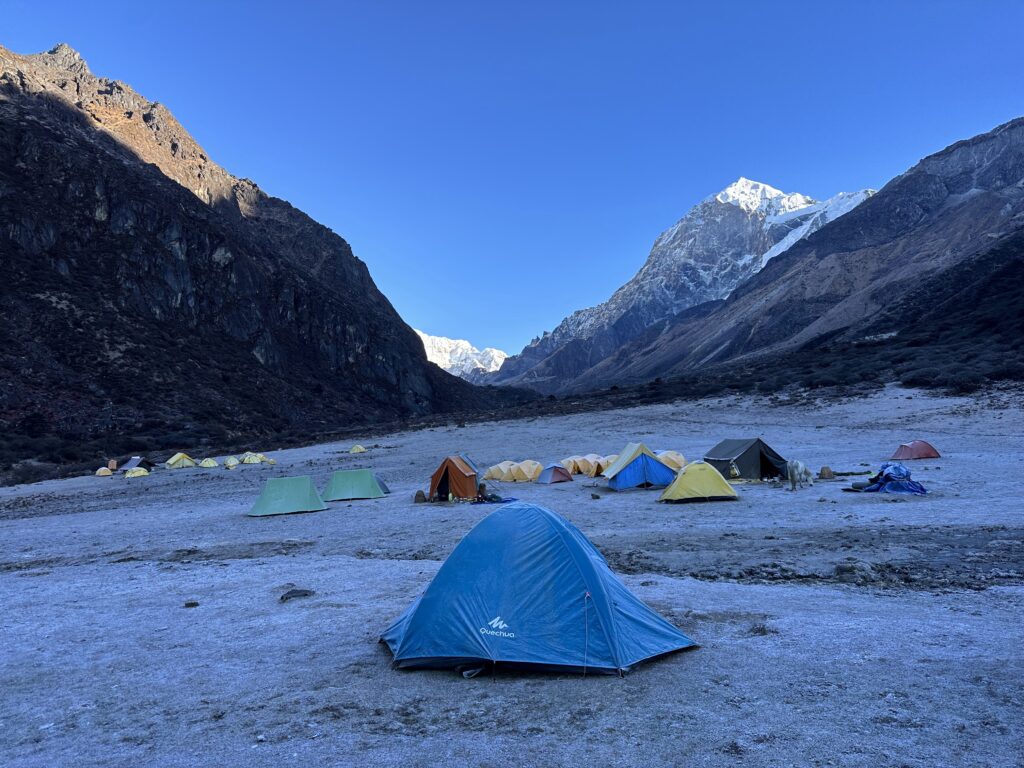 Camping at the Goecha La Trek India - Camping at Goecha La Trek India: A Premium Experience in the Heart of Sikkim The Goecha La Trek India is…
Camping at the Goecha La Trek India - Camping at Goecha La Trek India: A Premium Experience in the Heart of Sikkim The Goecha La Trek India is… 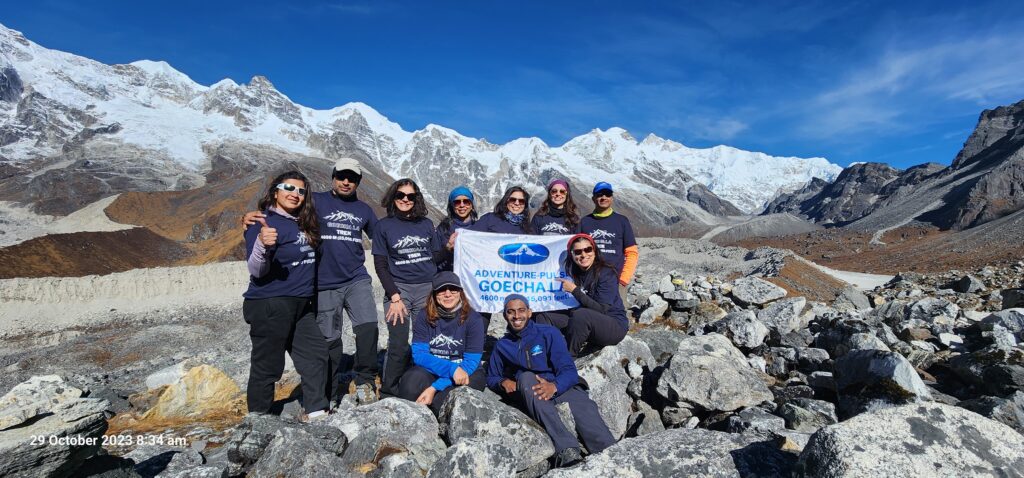 Trail to Goecha La: Challenges, Thrills & Triumphs, Mount Kanchenjunga - Northeast India is a hidden treasure, full of culture, stunning scenery, and a deep connection with nature. Traveling here teaches…
Trail to Goecha La: Challenges, Thrills & Triumphs, Mount Kanchenjunga - Northeast India is a hidden treasure, full of culture, stunning scenery, and a deep connection with nature. Traveling here teaches…

